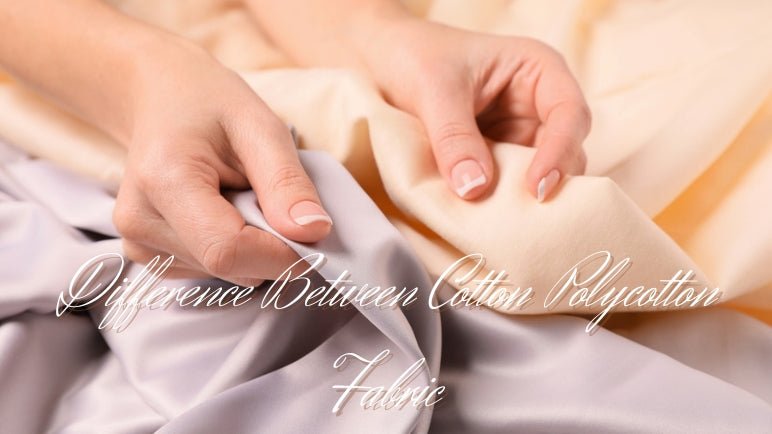Cotton and polycotton are two commonly used fabrics that serve different purposes. While cotton is a natural fabric that has been used for centuries, polycotton is a blend of cotton and synthetic fibers that has gained popularity in recent years. Cotton is a natural fiber that is harvested from the cotton plant, while polycotton is a blend of cotton and synthetic fibers, usually polyester.
Cotton is widely known for its softness, breathability, and absorbency, making it a popular choice for clothing, bedding, and other textile products. Polycotton, on the other hand, is often used in clothing that requires more durability and wrinkle resistance than pure cotton can provide. While both cotton and polycotton have their benefits, they also have their drawbacks, and the choice between the two will depend on the specific needs and preferences of the consumer.
In this article, we will explore the differences between cotton and polycotton and help you decide which one is the best fit for your needs.
What is the Difference Between Cotton and Polycotton?
Is there a difference between cotton and polycotton? Cotton fabric and polycotton fabric are two popular fabrics used in clothing, bedding, and other textile products. While both fabrics have their advantages and disadvantages, there are some key differences between them.
|
Cotton |
Polycotton |
|
Made from natural fibers that come from cotton plants. |
Made from a blend of cotton and synthetic fibers like polyester. |
|
Breathable and absorbent, making it comfortable to wear. |
Less breathable than cotton but still more comfortable than some other synthetic fabrics. |
|
Generally more expensive than polycotton. |
Often less expensive than pure cotton. |
|
Can shrink after washing and drying. |
Less prone to shrinkage than cotton. |
|
Durable and can withstand high temperatures. |
Less durable than pure cotton and can melt if exposed to high heat. |
|
Prone to wrinkling and requires ironing. |
Less durable than pure cotton and can melt if exposed to high heat. |
How can you Tell Cotton from Polycotton?
The easiest way to tell cotton from polycotton is by checking the label or asking the manufacturer. Most clothing items have a label that indicates the composition of the fabric, including the percentage of cotton and polyester. If the label says 100% cotton, then the fabric is made entirely of cotton. If it says 50% cotton and 50% polyester, then the fabric is a blend of the two.
Another way to tell cotton from polycotton is by touch and feel. Cotton is soft, breathable, and absorbent, while polycotton is smoother, shinier, and less absorbent. Cotton wrinkles easily, while polycotton is more resistant to wrinkles. In terms of weight, cotton is usually heavier than polycotton, but it can vary depending on the weave and thickness of the fabric.
Discover More: What Are The Wash Care Instructions For Poly Cotton.
What are the Wash Care Instructions for Poly Cotton Fabric?
Breathability
Breathability refers to the ability of a fabric to allow air to circulate and moisture to evaporate. Cotton is highly breathable and absorbent, which makes it ideal for warm weather and sports activities. It wicks away moisture from the skin, keeping the wearer cool and dry. Polycotton is less breathable than cotton because polyester does not absorb moisture as well. However, it is more moisture-wicking than pure cotton, which means it dries faster and does not retain sweat as much.
Durability
Durability refers to the ability of a fabric to withstand wear and tear, washing, and other stress factors. Cotton is a durable fabric that can last for years with proper care. It can withstand high temperatures, heavy use, and frequent washing without losing its shape or color. Polycotton is also durable but less so than cotton. Polyester fibers are more prone to pilling, snagging, and stretching than cotton fibers. However, polycotton blends are often more durable than pure cotton because polyester adds strength and resilience to the fabric.
Warmth
Warmth refers to the ability of a fabric to retain heat and provide insulation. Cotton is a breathable fabric that does not retain heat well, which makes it suitable for summer clothing and bedding. It is also a good insulator in winter when used in layers. Polycotton is a warmer fabric than cotton because polyester traps heat and blocks wind better. However, it is not as warm as wool or fleece, which are better insulators.
Softness
Softness refers to the texture and feel of a fabric against the skin. Cotton is a naturally soft and fluffy fiber that feels comfortable and gentle. It becomes softer with every wash and does not irritate the skin. Polycotton is less soft than cotton because polyester fibers are smoother and stiffer. However, the blend of cotton and polyester can make the fabric softer than pure polyester.
Thickness
Thickness refers to the density and weight of a fabric. Cotton fabrics can vary in thickness depending on the weave and thread count. The higher the thread count, the thicker and more durable the fabric. Polycotton fabrics are generally thinner and lighter than pure cotton fabrics because polyester fibers are thinner than cotton fibers.
Colors
Cotton is a natural material that is available in a wide range of colors. However, the color may fade over time if it is exposed to sunlight or washed frequently. Polycotton, on the other hand, is more resistant to fading and can maintain its color for longer periods.
Shrinking
Cotton is known for its tendency to shrink when washed or exposed to heat. This is because cotton fibers tend to contract when they are exposed to water or heat. Polycotton, on the other hand, is less likely to shrink because it contains polyester fibers that do not react to heat or water.
Cost
Cotton is generally more expensive than polycotton. This is because it is a natural material that requires a lot of care and maintenance. Polycotton, on the other hand, is more affordable and requires less care and maintenance.
Enhance Your Knowledge: What Are The Different Types Of Cotton?
Care and Maintenance
Cotton requires more care and maintenance than polycotton. It should be washed in cold water and dried on low heat to prevent shrinkage. It should also be ironed on a low heat setting to avoid damage to the fibers. Polycotton, on the other hand, is more durable and can be washed in warm water and dried on a high heat setting. It is also less likely to wrinkle and does not require ironing.
Sustainability
Cotton is a renewable resource that is biodegradable and compostable. However, the production of cotton requires a lot of water, pesticides, and energy. Polycotton, on the other hand, is made from a blend of cotton and polyester fibers. While polyester is not biodegradable, it is a more sustainable option because it requires less water and energy to produce.
Uses
Cotton is a popular material for clothing, bedding, and towels because it is soft, comfortable, and breathable. It is also hypoallergenic and does not irritate the skin. Polycotton, on the other hand, is more durable and resistant to wrinkling, making it a popular choice for clothing and bedding that requires frequent washing.
Read More About: Is Cotton Fabric Season Friendly
Is Cotton or Polycotton Better for Bedding?
Cotton is a natural fiber and is generally considered to be the more comfortable and breathable option for bedding. It is soft, durable, and easy to care for. Cotton bedding can help regulate body temperature and keep you cool in the summer and warm in the winter.
Polycotton is a blend of cotton and polyester fibers, which can offer some benefits over 100% cotton bedding. Polycotton is often more affordable than cotton and can be more resistant to wrinkles, shrinking, and fading. It can also be easier to care for and dries more quickly.
However, some people find polycotton to be less comfortable and breathable than cotton. Polycotton may trap heat and moisture, which can make it uncomfortable to sleep in. It may also be less soft to the touch than pure cotton.
Both cotton and polycotton have their own advantages and disadvantages for bedding. It is important to consider your own preferences and needs, as well as the quality and thread count of the bedding when making your decision.
Which One is Better?
The choice between cotton and polycotton depends on several factors, including the intended use of the fabric, personal preference, and budget.
If you are looking for a material for everyday wear, cotton is a better choice. It is comfortable, breathable, and durable. It is also environmentally friendly and biodegradable. However, if you want a material for sportswear or workwear, polycotton is a better choice. It is durable, quick-drying, and easy to care for.



